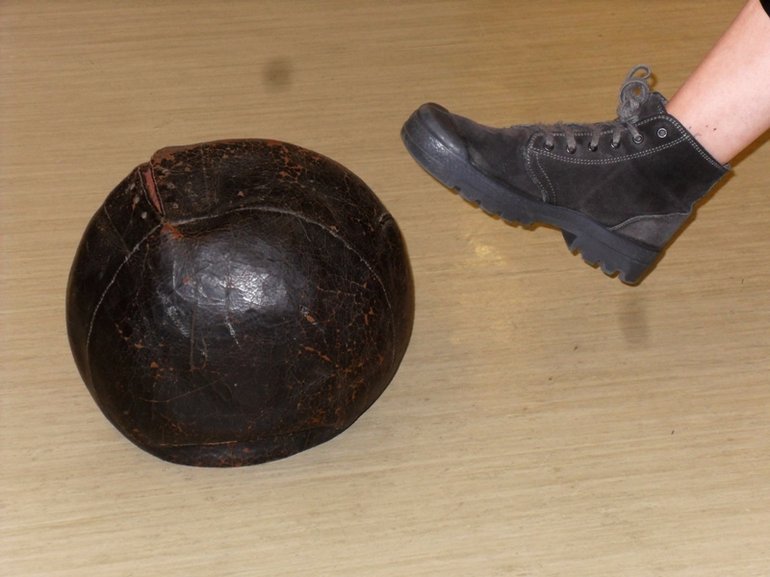
One of the great things about working with such a diverse collection as the Shakespeare Birthplace Trust’s is that you never know what you’re going to come across or what collection surprises might suddenly appear – such as this late 19th century leather football, which was found at our Mary Arden’s site. So that's surprise number one; surprise number two is that, like almost everything in life, there’s a Shakespeare connection. Obviously, this ball is too late for ‘our Will’ to have had a kick around with (and this one is stuffed with tights rather than a pig’s bladder), but the man with the finger on the pulse makes reference to the beautiful game in two of his plays. First in the The Comedy of Errors when the servant, Dromio of Ephesus complains of his treatment by his masters:
Am I so round with you as you with me,
That like a football you do spurn me thus?
You spurn me hence, and he will spurn me hither.
If I last in this service, you must case me in leather. (Act 2, Scene 1)
The next reference appears in King Lear, when the character Kent taunts Goneril’s servant, Oswald, by calling him a ‘base football player’ (Act 1, Scene 4).
In Shakespeare’s day, football wasn’t so much the ‘beautiful’ but more the ‘deadly’ game. Research has shown that in the 16th century, more people died playing it than either sword fighting or wrestling, making football back then the second most lethal sport after archery. Played between neighbouring towns and villages, often involving an unlimited number of players (‘mob football’ seems to have been the style of the day, though mind you, anyone who watched Wimbledon F.C. in the 80s and 90s and the antics of the ‘Crazy Gang’ as the players were known might wonder about the progress of time...). To the Tudors, it’s this more ‘base’, rough-and-tumble game that Shakespeare seems to be referring to in his two plays. Indeed, the unruly nature of the sport and its tendency to incite rebellion led to numerous attempts to ban it, but to little or no effect, and instead the game slowly matured into the more organised sport we know and some of us love today.

You can read about football and lots of other sports - Shakespeare’s mentions about 50 different ones in his plays - at a special exhibition this summer at Mary Arden’s. And while you might not be able to practice your headers with this particular one (and rest assured no contact was made with the ball pictured; I’m an Aston Villa fan so contact with the ball is a bit of a hit and miss thing for us anyway) you can enjoy a giant-sized game of Nine Men’s Morris, which is probably far safer and less bruising than a recreation of an Tudor football match. The exhibition "Muscles, Balls and Bowls" runs at Mary Arden’s Farm until the Farm closes for winter later in the year.
